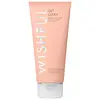What's inside
What's inside
 Key Ingredients
Key Ingredients

 Benefits
Benefits

 Concerns
Concerns

 Ingredients Side-by-side
Ingredients Side-by-side

Water
Skin ConditioningGlycerin
HumectantCocamidopropyl Betaine
CleansingPotassium Cocoyl Glycinate
Disodium Cocoamphodiacetate
CleansingAcrylates Copolymer
Sodium Chloride
MaskingGluconolactone
Skin ConditioningTromethamine
Buffering1,2-Hexanediol
Skin ConditioningChondrus Crispus Extract
Skin ConditioningSalix Alba Bark Extract
AstringentCeramide NP
Skin ConditioningSalicylic Acid
MaskingStyrene/Vp Copolymer
Lauryl Glucoside
CleansingButylene Glycol
HumectantCaprylyl Glycol
EmollientPolyglyceryl-10 Laurate
Skin ConditioningEthylhexylglycerin
Skin ConditioningHexylene Glycol
EmulsifyingSodium Dodoxynol-40 Sulfate
Benzotriazolyl Dodecyl P-Cresol
UV AbsorberAlcohol
AntimicrobialTris(Tetramethylhydroxypiperidinol)Citrate
StabilisingSorbic Acid
PreservativeParfum
MaskingBenzyl Salicylate
PerfumingWater, Glycerin, Cocamidopropyl Betaine, Potassium Cocoyl Glycinate, Disodium Cocoamphodiacetate, Acrylates Copolymer, Sodium Chloride, Gluconolactone, Tromethamine, 1,2-Hexanediol, Chondrus Crispus Extract, Salix Alba Bark Extract, Ceramide NP, Salicylic Acid, Styrene/Vp Copolymer, Lauryl Glucoside, Butylene Glycol, Caprylyl Glycol, Polyglyceryl-10 Laurate, Ethylhexylglycerin, Hexylene Glycol, Sodium Dodoxynol-40 Sulfate, Benzotriazolyl Dodecyl P-Cresol, Alcohol, Tris(Tetramethylhydroxypiperidinol)Citrate, Sorbic Acid, Parfum, Benzyl Salicylate
Water
Skin ConditioningSodium Cocoyl Isethionate
CleansingGlycerin
HumectantStearic Acid
CleansingHydrogenated Coconut Acid
EmollientSodium Isethionate
CleansingStearyl Alcohol
EmollientAllantoin
Skin ConditioningChrysanthemum Parthenium Extract
Skin ConditioningCamellia Sinensis Leaf Extract
AntimicrobialGlycyrrhiza Glabra Root Extract
BleachingAloe Barbadensis Leaf Juice
Skin ConditioningTocopherol
AntioxidantHydrogenated Palm Glycerides Citrate
EmollientPhenoxyethanol
PreservativeDisodium Cocoamphodiacetate
CleansingSodium PCA
HumectantHydroxypropyl Methylcellulose
Emulsion StabilisingCoco-Glucoside
CleansingGlyceryl Oleate
EmollientSodium Chloride
MaskingDisodium EDTA
Citric Acid
BufferingPotassium Sorbate
PreservativeSodium Benzoate
MaskingMaltodextrin
AbsorbentTetrasodium EDTA
Water, Sodium Cocoyl Isethionate, Glycerin, Stearic Acid, Hydrogenated Coconut Acid, Sodium Isethionate, Stearyl Alcohol, Allantoin, Chrysanthemum Parthenium Extract, Camellia Sinensis Leaf Extract, Glycyrrhiza Glabra Root Extract, Aloe Barbadensis Leaf Juice, Tocopherol, Hydrogenated Palm Glycerides Citrate, Phenoxyethanol, Disodium Cocoamphodiacetate, Sodium PCA, Hydroxypropyl Methylcellulose, Coco-Glucoside, Glyceryl Oleate, Sodium Chloride, Disodium EDTA, Citric Acid, Potassium Sorbate, Sodium Benzoate, Maltodextrin, Tetrasodium EDTA
 Reviews
Reviews

Ingredients Explained
These ingredients are found in both products.
Ingredients higher up in an ingredient list are typically present in a larger amount.
Disodium Cocoamphodiacetate is a surfactant and helps cleanse skin. It is created from the fatty acids of coconut oil.
Surfactants help rinse oil, dirt, and other pollutants easily from skin. It has a faint fruit-like scent.
Glycerin is already naturally found in your skin. It helps moisturize and protect your skin.
A study from 2016 found glycerin to be more effective as a humectant than AHAs and hyaluronic acid.
As a humectant, it helps the skin stay hydrated by pulling moisture to your skin. The low molecular weight of glycerin allows it to pull moisture into the deeper layers of your skin.
Hydrated skin improves your skin barrier; Your skin barrier helps protect against irritants and bacteria.
Glycerin has also been found to have antimicrobial and antiviral properties. Due to these properties, glycerin is often used in wound and burn treatments.
In cosmetics, glycerin is usually derived from plants such as soybean or palm. However, it can also be sourced from animals, such as tallow or animal fat.
This ingredient is organic, colorless, odorless, and non-toxic.
Glycerin is the name for this ingredient in American English. British English uses Glycerol/Glycerine.
Learn more about GlycerinChances are, you eat sodium chloride every day. Sodium Chloride is also known as table salt.
This ingredient has many purposes in skincare: thickener, emulsifier, and exfoliator.
You'll most likely find this ingredient in cleansers where it is used to create a gel-like texture. As an emulsifier, it also prevents ingredients from separating.
There is much debate on whether this ingredient is comedogenic. The short answer - comedogenic ratings don't tell the whole story. Learn more about comegodenic ratings here.
The concensus about this ingredient causing acne seems to be divided. Research is needed to understand if this ingredient does cause acne.
Scrubs may use salt as the primary exfoliating ingredient.
Learn more about Sodium ChlorideWater. It's the most common cosmetic ingredient of all. You'll usually see it at the top of ingredient lists, meaning that it makes up the largest part of the product.
So why is it so popular? Water most often acts as a solvent - this means that it helps dissolve other ingredients into the formulation.
You'll also recognize water as that liquid we all need to stay alive. If you see this, drink a glass of water. Stay hydrated!
Learn more about Water